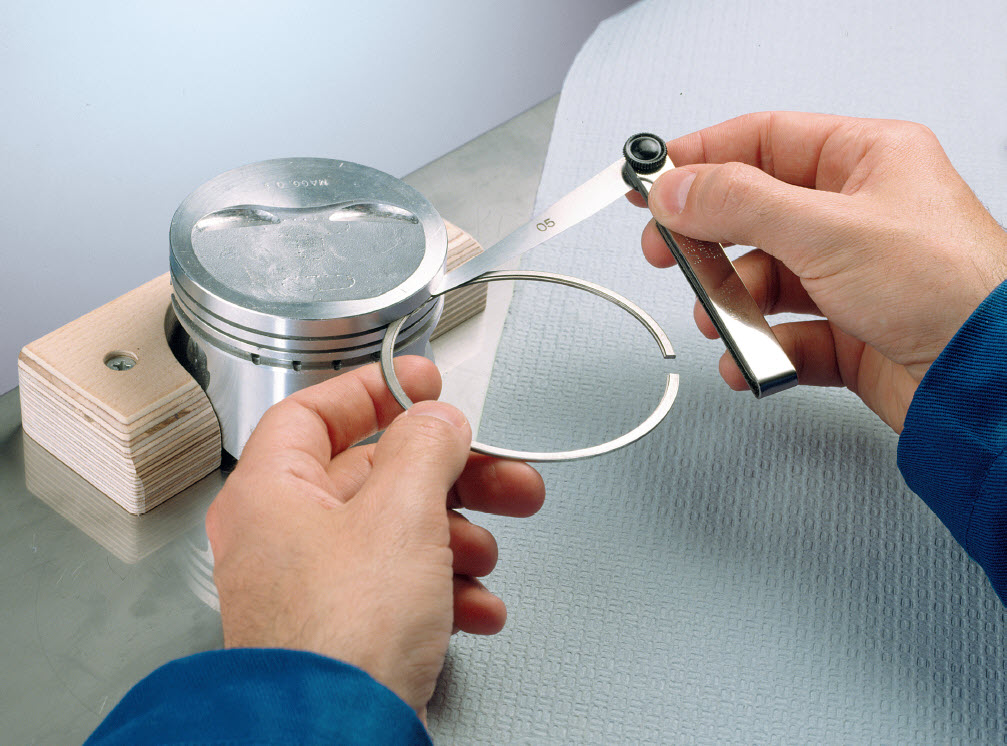In order to maintain a relatively uniform and suitable gap between the piston and the cylinder wall at normal operating temperature and ensure the normal operation of the piston, the piston structure design usually has the following characteristics.

1. Make an oval shape in advance. In order to make both sides of the skirt bear the gas pressure and maintain a small and safe gap with the cylinder, the piston is required to be cylindrical when working. However, because the thickness of the piston skirt is very uneven, the metal of the piston pin seat hole is thick, and the amount of thermal expansion is large, and the amount of deformation along the axis of the piston pin seat is greater than in other directions. In addition, the skirt is under the action of the gas side pressure, which causes the axial deformation of the piston pin to be greater than the vertical piston pin direction. In this way, if the skirt of the piston is circular when it is cold, the piston will become an ellipse when it is working, making the circumferential gap between the piston and the cylinder unequal, causing the piston to jam in the cylinder and the engine cannot work normally. Therefore, the piston skirt is formed into an oval shape in advance during processing. The long axis direction of the ellipse is perpendicular to the pin seat, and the short axis direction is along the pin seat direction, so that the piston approaches a perfect circle when working.
2.It is made into a stepped or tapered shape in advance. The temperature of the piston along the height direction is very uneven. The temperature of the piston is higher at the upper part and lower at the lower part, and the expansion amount is correspondingly larger at the upper part and smaller at the lower part. In order to make the upper and lower diameters of the piston tend to be equal during operation, that is, cylindrical, the piston must be pre-made into a stepped shape or cone with a small upper and a large lower.
3.Slotted piston skirt. In order to reduce the heat of the piston skirt, a horizontal heat insulation groove is usually opened in the skirt. In order to compensate for the deformation of the skirt after heating, the skirt is opened with a longitudinal expansion groove. The shape of the groove has a T-shaped groove.
The horizontal groove is generally opened under the next ring groove, on both sides of the pin seat on the upper edge of the skirt (also in the oil ring groove) to reduce the heat transfer from the head to the skirt, so it is called the heat insulation groove. The vertical groove will make the skirt have a certain degree of elasticity, so that the gap between the piston and the cylinder is as small as possible when the piston is assembled, and it has a compensation effect when it is hot, so that the piston will not be stuck in the cylinder, so the vertical groove is called For the expansion tank. After the skirt is vertically slotted, the rigidity of the slotted side will become smaller. During assembly, it should be located on the side where the side pressure is reduced during the work stroke. The piston of the diesel engine bears a lot of force. The skirt part is not grooved.
4.In order to reduce the quality of some pistons, a hole is made in the skirt or a part of the skirt is cut off on both sides of the skirt to reduce the J inertia force and reduce the thermal deformation near the pin seat to form a carriage piston or a short piston . The skirt of the carriage structure has good elasticity, small mass, and small matching clearance between the piston and the cylinder, which is suitable for high-speed engines.
5.In order to reduce the thermal expansion of the aluminum alloy piston skirt, some gasoline engine pistons are embedded with Hengfan steel in the piston skirt or pin seat. The structural feature of Hengfan steel piston is that Hengfan steel contains 33% nickel. The 36% low-carbon iron-nickel alloy has an expansion coefficient of only 1/10 of that of aluminum alloy, and the pin seat is connected to the skirt by the Hengfan steel sheet, which restrains the thermal expansion deformation of the skirt.
6. On some gasoline engines, the centerline of the piston pin hole deviates from the plane of the piston centerline, which is offset by 1 to 2 mm to the side of the work stroke that receives the pressure on the main side. This structure enables the piston to transition from one side of the cylinder to the other side of the cylinder from the compression stroke to the power stroke, so as to reduce the knocking sound. During installation, the biased direction of the piston pin cannot be reversed, otherwise the reversing knocking force will increase and the skirt will be damaged.
